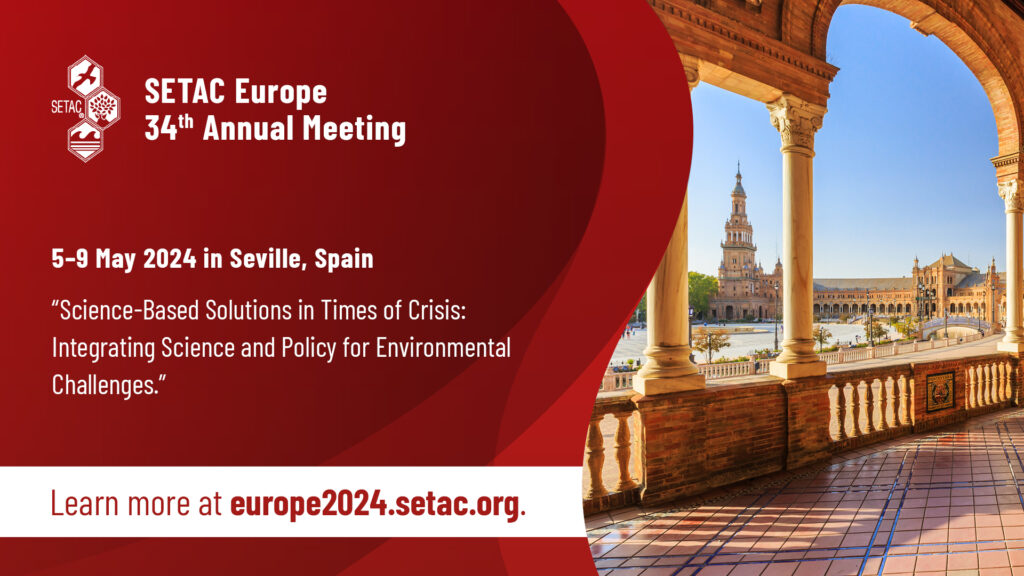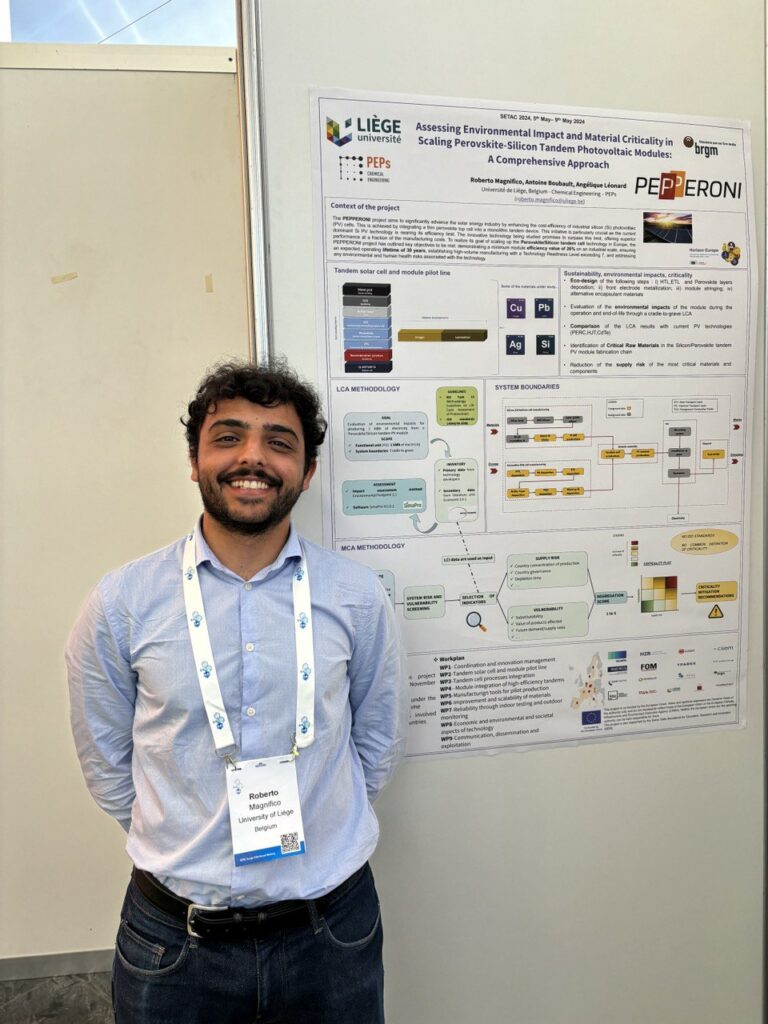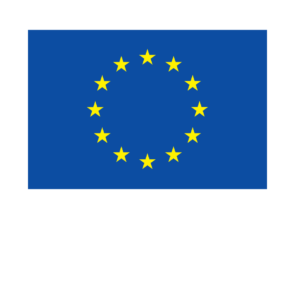The SETAC Europe 34th Annual Meeting was held from 5th to 9th May 2024 at the FIBES in Seville, Spain. This prestigious event brought together environmental scientists, industry experts, and policy-makers from around the globe to discuss the latest advancements in environmental science and technology. The conference, renowned for its comprehensive scope, covered various tracks, including Life Cycle Assessment (LCA), environmental chemistry, ecotoxicology, and risk assessment, to name a few.
Focusing on Life Cycle Assessment
One of the critical areas of focus at the conference was Life Cycle Assessment (LCA), a methodological framework used to assess the environmental impacts of products, processes, or services throughout their life cycle. LCA is instrumental in identifying opportunities to improve environmental performance and is a cornerstone of sustainable development practices.
PEPPERONI Project’s Contribution: A Spotlight on Perovskite-Silicon Tandem Photovoltaic Modules
The PEPPERONI project also contributed to the conference with a poster presentation from Roberto Magnifico (University of Liège) titled “Assessing Environmental Impact and Material Criticality in Scaling Perovskite/Silicon Tandem Photovoltaic Modules: a Comprehensive Approach.” This presentation highlighted an integrated approach combining Life Cycle Assessment and Critical Raw Materials Analysis to address the challenges of scaling up perovskite-silicon tandem photovoltaic modules.
Research Insights: Sustainable Production and Raw Material Analysis
The research presented by the PEPPERONI partners introduced an innovative methodology that aims at ensuring the sustainable production of perovskite-silicon tandem photovoltaic modules. By leveraging LCA, the study examined the entire life cycle of these modules, from the extraction of raw materials to the end-of-life phase. This cradle-to-grave analysis encompassed various stages, including mineral mining, material manufacturing, cell and module production, pilot line operation, and field deployment. Material criticality, a central focus of this research, will be assessed through a multifaceted approach considering economic importance and supply risk.
A significant focus of the study is on identifying and mitigating environmental “hot spots” through eco-design principles. The researchers explore alternative materials and processes, rigorously evaluating and comparing their environmental impacts to select the most sustainable options. This comprehensive approach is crucial in addressing the environmental considerations and raw material scarcity associated with the nascent perovskite/silicon tandem solar technology.
The SETAC Europe 34th Annual Meeting in Seville was one of the key platforms for the PEPPERONI project to showcase its comprehensive research. The project’s innovative approach to integrating Life Cycle Assessment and Critical Raw Materials Analysis not only contributes to the sustainable development of emerging photovoltaic technologies but also underscores the importance of interdisciplinary collaboration in tackling global environmental challenges. The insights gained from this research are shared and considered by the PEPPERONI partners covering a full value chain of innovative PV.
Stay tuned for more updates from the PEPPERONI project.




